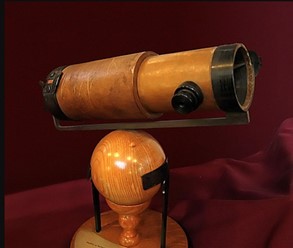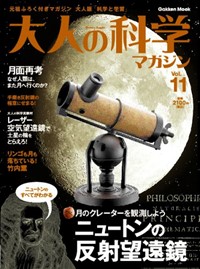Sir Isaac Newton and Newton’s Reflecting Telescope
Sir Isaac Newton invented the reflecting telescope in 1668, a significant contribution to the field of optics that impacted the development of telescopes during the scientific revolution. His main innovation was the use of a concave mirror to gather light, which helped combat chromatic aberration and revolutionized telescope technology. Newton’s reflecting telescope design, known as the Newtonian telescope, became popular among amateur telescope makers and laid the foundation for future advancements in telescope technology. His understanding of magnification and focal length in the development of telescopes was significant, as his innovations in reflecting telescope design improved image quality, light-gathering power, and resolution in astronomical observations.
Who is Sir Isaac Newton?
Sir Isaac Newton was an English mathematician, physicist, and astronomer who is widely recognized as one of the most influential scientists in history. He is best known for his contributions to the laws of motion, universal gravitation, and the development of calculus. Newton’s namesake is synonymous with scientific genius and his work laid the foundation for modern physics and mathematics. In addition to his scientific discoveries, Newton’s life and career are also notable for his education, personal life, achievements, and legacy. His influence extends to various fields of study, and his ideas continue to shape our understanding of the natural world. Newton was born on January 4, 1643 (according to the Gregorian calendar) in Woolsthorpe-by-Colsterworth, Lincolnshire, England.
What is Newton’s Telescope?
Newton’s telescope is a type of reflecting telescope invented by the English scientist Sir Isaac Newton. The Newtonian telescope, also known as the Newtonian reflector or simply a Newtonian, utilizes a concave primary mirror and a flat diagonal secondary mirror to gather and focus light. It is an optical instrument designed for viewing distant celestial objects, including stars, planets, and galaxies.
Newton’s telescope is characterized by its innovative design, which deviated from the traditional refracting telescopes that used lenses. Instead, it employed mirrors to reflect and magnify incoming light. The primary mirror, with its concave shape, collects the light, while the secondary mirror reflects the light at a 90-degree angle, allowing the observer to view the image through an eyepiece.
Newton’s telescope had several notable features and functions. Its primary advantage was the use of mirrors, which reduced chromatic aberration, a common issue in refracting telescopes. Additionally, the Newtonian telescope offered a relatively large aperture, providing greater light-gathering capabilities and the potential for higher magnification.
Sir Isaac Newton’s original telescope, completed in 1668, had specific dimensions and specifications. These included a 2-inch concave primary mirror, a focal length of 6.25 inches, and an effective (stopped down) F-number of f/4.78. The telescope achieved a magnification of 35 times with an eyepiece focal length of 0.17 inches (4.5mm).
Replicas and variations of Newton’s telescope have been created over the years, with different optics, apertures, and focal lengths. Some notable replicas were made by F.L. Agate for the Science Museum in London in 1924 and by various designers in the 1960s, 1984, and beyond for different collectors and institutions.

Fig 1: Newton’s reflecting telescope displayed to the Royal society
Did Isaac Newton Invent the First Reflecting Telescope?
Yes, Isaac Newton invented the first reflecting telescope. His invention of the reflecting telescope is attributed to his work as a professor at Trinity College in Cambridge in 1668. Newton’s invention was a response to the limitations of refracting telescopes, which suffered from chromatic aberration. His design, which used a primary concave mirror to gather light and a secondary flat diagonal mirror to reflect the image to the eyepiece, eliminated chromatic aberration and produced clearer images. Newton’s invention of the reflecting telescope was a culmination of his expertise in optics, mathematics, and physics. He drew on his knowledge of optics to address the shortcomings of refracting telescopes and his understanding of mathematics and physics to create a precise and effective telescope design. Newton’s invention marked a significant milestone in the development of telescopes and had a profound impact on the scientific revolution, paving the way for new discoveries in astronomy.
How did Sir Isaac Newton improve the telescope?
Sir Isaac Newton used a curved mirror made of a tin and copper alloy instead of a lens to reduce chromatic aberration, which made the telescope smaller and more compact. He also used his mathematical skills to invent the reflecting telescope, which greatly improved the accuracy of telescopes during his time. These advancements were related to his understanding of optics and light composition, which allowed for clearer and more accurate observations of celestial bodies.
What lens did Sir Isaac Newton used for improvement of the telescope?
Sir Isaac Newton did not use lenses, instead he used a curved mirror made of a tin and copper alloy to construct his reflecting telescope, which he invented in 1668. This mirror was a key component of the telescope, along with a parabolic primary mirror, which improved functionality and reduced chromatic aberration.
Newton’s choice of materials, including the tin and copper alloy for the mirror, was influenced by his meticulous approach to science and his commitment to using the best materials and techniques for optimal results. This mirror, along with the curved mirror, allowed for greater precision and clarity in observing celestial objects compared to the traditional refracting telescope.
Sir Isaac Newton’s use of this mirror and his overall design of the reflecting telescope marked a significant turning point in the development of telescopes and opened up new possibilities for astronomers.
How did the Newton’s reflecting telescope impact society?
The Newtonian reflecting telescope had a profound impact on society and astronomy through its design features, which included its cost-effectiveness, versatility, and the ability to be scaled up in size. These features allowed for greater accessibility to telescopes and facilitated advancements in observational capabilities.
We all know that the Newtonian telescope did not contribute to discovering any new celestial objects, but it did change our view of the universe. Here we will focus on this popular telescope and some other discoveries of one of the greatest scientists Sir Isaac Newton.
Sir Isaac Newton, the greatest Mathematician and Astronomer of all time made tremendous contributions to various fields of science including the development of telescopes. In his days, refracting telescopes were used for various experiments. As these refracting telescopes used lenses, it could bend light and magnify images to multiple extents. But it had some optical problems named chromatic aberration which means the distortion of color. For this problem the images from the telescopes became fuzzy.
Newton was not the first one to come up with the idea of using mirrors instead of lenses in the telescope. He made a reflecting telescope with a mirror to conduct experiments on his theory of white light being a mixture of spectrum. And this invention changed our understanding of the universe completely overnight.

Fig 3: Hand Made Replica of Newton’s Telescope
The actual telescope that Newton himself built and used still exists and now it is in the custody of the Royal society of London and sometimes they take it to different parts of the world for exhibition.
What Did Isaac Newton See With His Telescope?
Isaac Newton observed many celestial objects and phenomena with his telescope, making significant contributions to our understanding of the universe. Some of the notable objects and phenomena he observed include: the Moon, which he studied to determine its topography and the cause of lunar libration; the planets, including Jupiter and Saturn, whose motions and features he documented; comets, which he observed and cataloged; and star clusters, such as the Pleiades, which he studied to determine their structure and the nature of starlight.
Newton’s observations with his telescope played a critical role in his scientific work. They provided him with empirical data that he used to develop his theories and mathematical models of the universe. In particular, his observations of the planets and their motions helped him refine his laws of motion and universal gravitation, while his studies of optics and the nature of light led to his groundbreaking work on the theory of color and the invention of the reflecting telescope.
Like other scientists, Newton did not focus on discovering celestial bodies at that time. He worked on something more important, that changed our view and understanding about the universe. He connected mathematics, physics and astronomy by his theory of gravitation which he proved using his telescope. He showed mathematically that gravitation was always a two way operation like while earth is pulling a falling apple, the apple is also pulling the earth. By his telescope he proved that the planetary system follows this same gravitational theory. Planets move around the sun just for the balanced two way operation of Gravitational force between them. This discovery became well accepted and very famous along with the Newtonian Telescope.
How Did Sir Isaac Newton Change the History of Telescopes?
Sir Isaac Newton’s impact on the history of telescopes is multifaceted, encompassing both his contributions to telescope design and technology and his broader influence on the field. Sir Isaac Newton made significant advancements to telescope design and technology by introducing the reflecting telescope and integrating the phenomena of colors into the science of light. His influence brought the invention of the reflective telescope in 1668, which revolutionized modern telescopes by using mirrors to improve image clarity and reduce size. He improved the design of the reflecting telescope by using a curved mirror made of a tin and copper alloy, reducing chromatic aberration and spherical aberration, and laying the foundation for future advancements in telescope technology. His understanding of magnification and focal length in the development of telescopes was significant, as his innovations in reflecting telescope design improved image quality, light-gathering power, and resolution in astronomical observations.
His design, which used a concave primary mirror and a flat diagonal secondary mirror, became popular among amateur telescope makers. The original telescope was located at Herstmonceux Castle in England, but was later moved to La Palma in the Canary Islands due to poor weather conditions. Today, the Isaac Newton Telescope is still in use with modern instruments such as the Wide Field Camera and intermediate dispersion spectrograph. Sir Isaac Newton made significant contributions to the field of optics, including the development of the first practical reflecting telescope and a sophisticated theory of color based on his observations of white light being separated into the colors of the visible spectrum. He also made contributions to the study of light and its properties, which have had a lasting impact on the field of physics. Sir Isaac Newton’s telescope innovations and scientific contributions align with his broader impact on the scientific revolution and the modern world.
Do People Still Use Newton’s type of Telescope?
Yes, people still use Newtonian telescopes, especially amateur astronomers. Newtonian telescopes are still popular because they are relatively inexpensive to build and offer excellent image quality for their cost. The main features of a Newtonian telescope include the use of mirrors, a primary mirror, and a secondary mirror angled at 45 degrees. They differ from other types of telescopes in terms of design and cost-efficiency. The light-gathering ability of a telescope is important as it determines how much detail you can see in celestial objects and allows for better observation of faint objects in the night sky. The purpose of the mount type in relation to choosing a telescope is to provide stability, precision, and ease of navigation for observing celestial objects. The resolution of a telescope is significant in determining its quality as it directly impacts its ability to distinguish fine details and separate closely spaced objects in the sky. However, Newtonian telescopes have some limitations that make them unsuitable for certain professional applications. For example, Newtonian telescopes are not used in space telescopes like Hubble because their open tube design makes them less effective for observing from within Earth’s atmosphere. Additionally, the large size and weight of some Newtonian telescopes can make them difficult to transport and set up.

Fig 2: Newton’s Reflecting Telescope Kit
The figure shows a real replica of a Newtonian reflecting telescope which you will find easily in Amazon. It has 10x magnification power and it looks great with its own base. Though the instructions are written in Japanese language, it is really easy to build by hand following only the step by step pictures given in the manual.
The Newtonian telescope has some limitations too. As it uses parabolic mirrors, it creates comatic aberration that creates a comet-like tail in the distorted view of stars. However, it was a revolutionary invention that changed the base of astronomy.
Advantages of Reflector Telescope over Refractor telescope
To understand the problems of refractor telescopes, we have to understand how a rainbow is formed or what happens in prism. We all know that when light travels through two different mediums, it bends. Another characteristic of light is when it passes through a glass, different colors of light bend at different angles as their speeds are different. This gives rise to the problem of chromatic aberration making an outline of undesired color along the edges of the objects in an image or photograph. Finally, we get distorted views of the object we see through the lens.
Here, one thing to keep in mind is that, we can make lenses that cause almost no chromatic aberration now. But at the time of Newton this problem was not resolved yet, so they had to consider this problem while using them for making mechanical devices like telescopes. Besides, our lens can be without chromatic aberration, but we cannot use bigger glass lenses. Because large lenses cause heavy weight and its own weight distorts the lens and makes a fuzzy image.
This is why Newton applied the idea of Galileo and used a mirror in his telescope and avoided this problem. A mirror reflects the light, so no distortion happens. Besides, you can make mirrors as large as you want. Because you just need to reflect the light off the surface you want to place the whole mirror on a base which can bear the weight of the mirror. Using this method, we can make a telescope without any distortion.
Another advantage of the Newtonian Telescope was that it was simpler and less expensive than the other available telescopes at that time. It was easy to find a short focal ratio which gave a wider field of view. Besides, as the eyepiece is mounted at the top of the telescope, overall it allows a compact mounting system which reduces cost and makes the telescope more portable.
Here, we have to be clear on the fact that Newton did not invent the first reflector telescope method. It was the Italian Monk, Astronomer and Physicist Niccolo Zucchi who invented it and made a reflector telescope in 1616. Later, he published a book on Optics in the year 1650 where he described his method. Sir Isaac Newton read this book and applied this method to make his own reflector telescope. Newton completed this work in 1670 much later than Zucchi’s. Yet Newton’s telescope became famous because Zucchi’s telescope had some other problems and could not work well. Newton’s telescope gave amazing discoveries which made it well known and was displayed to the Royal Society in 1672.

